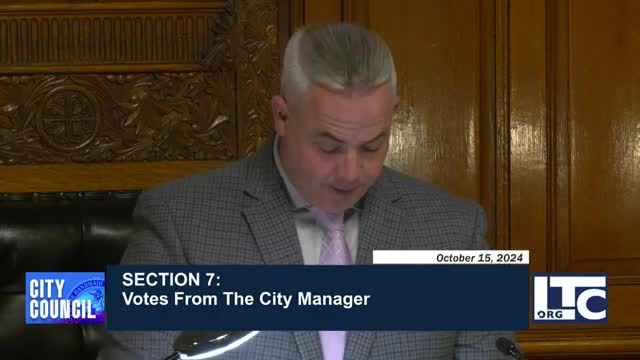City Council Debates Controversial Camping Ordinance Changes
October 15, 2024 | Lowell City, Middlesex County, Massachusetts
This article was created by AI summarizing key points discussed. AI makes mistakes, so for full details and context, please refer to the video of the full meeting. Please report any errors so we can fix them. Report an error »

During a recent city council meeting, significant discussions centered around an ordinance aimed at amending Chapter 222, which addresses unlawful camping on public property. The council proposed changes to the ordinance, particularly concerning restrictions on camping near schools and the responsibilities of city officials in enforcing these regulations.
Council members debated the implications of a proposed amendment that would prohibit camping within 1,000 feet of schools, regardless of shelter availability. The motion to refer the ordinance to the planning board for a public hearing was passed unanimously, indicating strong support for the proposed changes.
Concerns were raised regarding the enforcement of the ordinance, particularly about the potential for civil arrests and the penalties associated with violations. The city solicitor clarified that while law enforcement could arrest individuals for violating the ordinance, the penalties would typically involve fines determined by a judge, as no specific fines were outlined in the ordinance itself.
A motion was introduced to establish a written warning system for first-time offenders, allowing them 72 hours to vacate their camping sites before facing penalties. However, this motion faced opposition from several council members who argued that mandating warnings could hinder law enforcement's discretion in handling violations. Ultimately, the motion failed, reflecting a preference for leaving enforcement decisions to the judgment of law enforcement officers.
Additionally, council members sought clarification on definitions within the ordinance, such as what constitutes \"personal property\" and who would determine when shelters are full. The solicitor indicated that these decisions would likely fall to city officials or designated personnel responsible for monitoring shelter availability.
The meeting concluded with a request for further information regarding the costs associated with proposed fencing around public areas, highlighting ongoing efforts to enhance community safety and address homelessness in the city. The council's actions signal a proactive approach to managing public spaces while balancing the needs of the community and individuals experiencing homelessness.
Council members debated the implications of a proposed amendment that would prohibit camping within 1,000 feet of schools, regardless of shelter availability. The motion to refer the ordinance to the planning board for a public hearing was passed unanimously, indicating strong support for the proposed changes.
Concerns were raised regarding the enforcement of the ordinance, particularly about the potential for civil arrests and the penalties associated with violations. The city solicitor clarified that while law enforcement could arrest individuals for violating the ordinance, the penalties would typically involve fines determined by a judge, as no specific fines were outlined in the ordinance itself.
A motion was introduced to establish a written warning system for first-time offenders, allowing them 72 hours to vacate their camping sites before facing penalties. However, this motion faced opposition from several council members who argued that mandating warnings could hinder law enforcement's discretion in handling violations. Ultimately, the motion failed, reflecting a preference for leaving enforcement decisions to the judgment of law enforcement officers.
Additionally, council members sought clarification on definitions within the ordinance, such as what constitutes \"personal property\" and who would determine when shelters are full. The solicitor indicated that these decisions would likely fall to city officials or designated personnel responsible for monitoring shelter availability.
The meeting concluded with a request for further information regarding the costs associated with proposed fencing around public areas, highlighting ongoing efforts to enhance community safety and address homelessness in the city. The council's actions signal a proactive approach to managing public spaces while balancing the needs of the community and individuals experiencing homelessness.
View full meeting
This article is based on a recent meeting—watch the full video and explore the complete transcript for deeper insights into the discussion.
View full meeting
